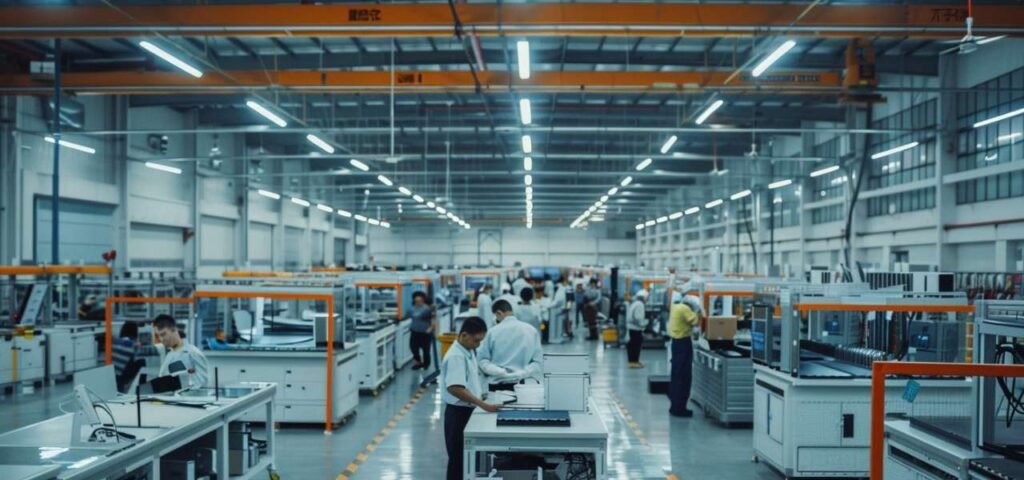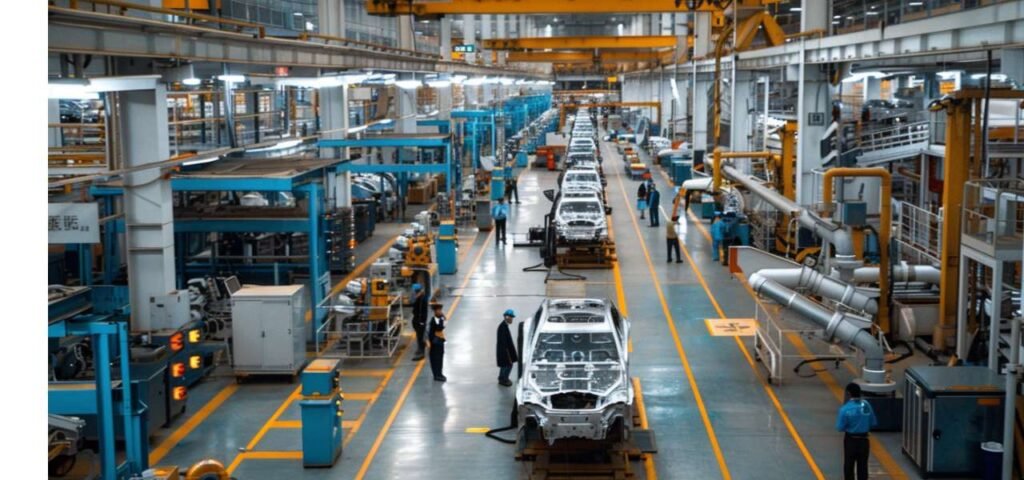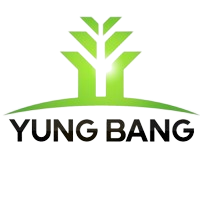1.Status of Lithium Battery Development in China
In 2023, oversupply and destocking were the main themes of the lithium battery industry throughout the year. Against the backdrop of excess capacity, the lithium battery sector faced price pressure on cells and materials. Coupled with the downward trend in lithium carbonate prices, which resulted in inventory losses in related segments, the overall profit of the lithium battery industry chain was under pressure. Rapid capacity expansion led to intensified price competition in the industry, marking a new phase of optimization in industry development. Looking ahead to 2024, can the overall market situation of the lithium battery industry rebound? What are the investment opportunities in various segments?
The lithium battery industry chain entered a period of high prosperity in the fourth quarter of 2020. In the second quarter of 2021, the industry chain underwent significant capital expenditure to expand capacity. As the expansion cycle of the lithium battery industry chain is basically within one to one and a half years, some segments of the industry chain began to face oversupply from the second quarter of 2022, and most segments experienced oversupply and price declines from the fourth quarter of 2022. In the first quarter of 2023, under the fluctuation of terminal growth and destocking pressure, the profitability of the industry chain rapidly declined to a reasonable return level for manufacturing, and continued to decline from the second half of 2023 to the first quarter of 2024. Domestic capacity construction slowed down in 2024 to further digest capacity, and the lithium battery industry actively expanded overseas.
With the slowdown in domestic capacity expansion in 2024, there is expected to be pressure in the first quarter due to the off-season effect. After bottoming out, the supply and demand situation is expected to gradually improve throughout the year, and it is expected that the supply and demand will gradually balance by 2025. The long-tail capacity may gradually be cleared, and the industry concentration will further increase. Against the backdrop of intensified competition domestically and strengthened localization policies in Europe and the United States, various segments of the lithium battery industry chain are actively expanding overseas. With the gradual increase in overseas capacity after 2025, it is expected to contribute new growth points to the domestic lithium battery industry.

2.Current Situation and Prospects of the Lithium Battery Industry Chain:
In January, prices stabilized weakly, and production scheduling decreased month-on-month, affecting prices. In terms of resources, lithium and nickel prices rose, and short-term prices may continue to stabilize weakly. In terms of main materials, except for battery cells, dry-process diaphragms, and positive electrode materials, prices throughout the entire industry chain showed varying degrees of decline. In terms of auxiliary materials, copper foil processing fees remained basically unchanged, while aluminum foil processing fees continued to decline. In terms of production scheduling, the production scheduling of the industry chain decreased by 15%-20% month-on-month in February, but the industry’s inventory is not high. The industry’s fundamentals are more stable than in 2023, and with the expected rebound in demand in March-April, it is expected to start stocking up, thereby improving the production scheduling of the industry chain. With the volume of smart driving vehicles of over 200,000 in China, the inflection point of European household storage and the arrival of the US mega storage, the industry chain is expected to see additional demand for replenishment in March-April, and production scheduling indicators are expected to improve significantly month-on-month. The medium-term logic of the sector remains unchanged: first, it is expected that the capacity utilization rate will reach a turning point in the second half of 2024, and some segments will return to a reasonable operating rate level in 2025; second, European carbon emissions and A0-grade models, relief in the US supply chain, and the expected reduction in domestic battery prices are expected to turn the medium-term demand expectation positive, and the sector is expected to move out of a sustained phase. In terms of competitive landscape, the CR3 rankings in 2023 are: diaphragm > electrolyte > lithium iron phosphate positive electrode > negative electrode materials > lithium battery copper foil > ternary positive electrode.
(1) Upstream Lithium Ore:
Carbonate lithium projects are difficult to develop, with long expansion cycles and rigid capacities. During the period of explosive demand for lithium batteries from 2020 to 2022, lithium carbonate prices rose from a minimum of 40,000 to over 600,000 yuan. With continued excess profits, lithium carbonate supply expanded rapidly, including domestic salt lakes, mica, Australia, South America, and Africa, all of which accelerated their capacity release in the second half of 2023. At the same time, the growth rate of the lithium battery industry slowed down in 2023, and destocking pressure further magnified demand fluctuations, leading to a decline in lithium carbonate prices to around 100,000 yuan by the end of 2023.
From the perspective of supply and demand, lithium carbonate prices are still under downward pressure in 2024 but are gradually touching the cost line of domestic lithium mica and African mines, and are expected to be supported in the range of 70,000 to 80,000 yuan. In terms of rhythm, the expected demand rebound and additional demand for replenishment in March-April are likely to stabilize or even rebound lithium carbonate prices temporarily, followed by a downward trend as supply is released.
(2) Downstream Demand:
New energy vehicles and energy storage continue to drive the sustained growth of lithium battery demand.
Vehicle production and sales: In January, the domestic market showed a strong year-on-year increase, with Europe continuing its recovery and the United States slightly below expectations. The domestic market saw a year-on-year increase in January due to a low base, with a weak penetration rate trend. According to the China Association of Automobile Manufacturers (CAAM), wholesale sales in January were 682,000 vehicles, a year-on-year increase of 75.3%, and the wholesale penetration rate was 33%, an increase of 5.8 percentage points year-on-year. In terms of vehicle structure, the proportion of plug-in hybrid electric vehicles (PHEVs) increased, and extended-range models contributed positively to incremental growth, with PHEVs accounting for 41% of sales in January, an increase of 11 percentage points year-on-year. In terms of segment distribution, electric vehicle (EV) models saw increased sales at both ends, and PHEV models in the B segment showed significant growth. At the corporate level, Huawei’s new car orders performed strongly, Geely New Energy achieved a historical high, and BYD’s destocking sales declined; in terms of models, BYD and Tesla models ranked at the forefront of sales, with Wuling M7 and Jinko 007 quickly gaining momentum. The European market continued its recovery momentum in January, with a high year-on-year growth rate against a low base. The growth rate in Germany and the UK slowed year-on-year, while France accelerated its electrification. Among them, the combined sales of seven European countries totaled 728,000 vehicles, a year-on-year increase of 12.7%, and a month-on-month decrease of 10.8%. Weekly data tracking from February 1 to 20 showed a 12% increase in combined sales of 24,200 vehicles in six European countries. U.S. sales in January were slightly below expectations, with new energy vehicle sales of 116,000 vehicles, a year-on-year increase of 17%, a month-on-month decrease of 20.1%, and a penetration rate of 10%, a month-on-month increase of 0.5 percentage points.
From the demand side, the lithium battery industry still has broad growth prospects in 2024-2025, with positive signals emerging. The future of the two major terminal applications of new energy vehicles and energy storage is expected to maintain a high-speed growth trend, providing strong support for the demand of the lithium battery industry. Firstly, the strict carbon emission assessment in Europe in 2025 and the rise of consumption in Europe are worth looking forward to. This includes the A0-level small cars represented by Renault, PSA, FCA, MG, and the new car cycles generally starting in 2025-2026 for German automakers. Secondly, after the IRA Act and FEOC regulations are introduced in the United States, restrictions on the entry of Chinese industrial chains into the U.S. market will affect demand, but the material links of the Chinese industrial chain will be built overseas in 2025, and batteries will also enter the U.S. market through technology licensing and joint ventures. The return of the Chinese industrial chain to the U.S. market is expected to boost demand. Lastly, in the domestic market, after the price reduction of lithium carbonate, a turning point in demand is expected to occur. Firstly, economic models priced between 50,000 and 150,000 yuan are expected to increase cost-effectiveness, and automakers are expected to accelerate supply layout. Secondly, the inflection point of EV penetration rate and per-vehicle power is expected to occur, further driving demand for power batteries. If there is a positive expectation improvement on the demand side, against the background of slowing down the expansion of supply in the industry chain, the industry capacity utilization turning point is expected to gradually appear from the second half of 2024 to 2025, and profitability also has some room for recovery with the expansion of scale and cost control.
In terms of energy storage, the pace of interest rate hikes in the United States is expected to slow down in 2024. With a downward trend in financing costs, the demand for energy storage installations is expected to continue to be released. West Securities predicts that the global demand for new types of energy storage in 2025 will be 156.3 GW/384.4 GWh, with CAGRs of +94% and +106% for 2022-2025, respectively. The two major terminal applications of new energy vehicles and energy storage are expected to maintain a high-speed growth trend in the future, providing strong support for the demand of the lithium battery industry.

(3) Battery Installation:
Domestic installations doubled year-on-year in January, with second-tier manufacturers showing strong momentum. Domestic power battery installations in January totaled 32.3 GWh, a year-on-year increase of 100.2%. From the perspective of the domestic competitive landscape, CATL’s oligopoly position remained unchanged. In January, CATL installed 16.0 GWh, an increase of 123% year-on-year, with a market share of 49.4%, an increase of 5 percentage points month-on-month. After excluding BYD, its market share was 60.7%, an increase of 3 percentage points month-on-month. After securing cooperation with Huawei’s new car models, the surge in new car sales drove the increase in installation data. In the overseas market, cumulative installations reached 319.4 GWh in 2023, an increase of 43.2% year-on-year. In December, CATL achieved installations of 9.4 GWh, with a market share of 25.8%. Global installations totaled 705.5 GWh in 2023, a year-on-year increase of 39%, and CATL maintained a leading advantage in market share.
(4) Technological Aspects:
Cost reduction remains the core competitive focus of the main industry chain. In 2023, the new energy vehicle market ushered in a wave of price reductions. Against the background of shifting demand growth and intensified competition, the lithium battery industry’s demand for cost reduction is expected to continue in the long term. With structural overcapacity, battery and vehicle manufacturers vigorously promoted technological innovation in 2023. In terms of positive electrodes, manganese-based lithium iron phosphate and high-nickel ternary are the mainstream directions. Fast charging, composite copper foil, 4680 batteries, and other new technologies are still in the process of gradual breakthroughs.
Fast charging: Models equipped with 800V fast charging are expected to be launched in large quantities, and after CATL released the Shing Charge battery, it quickly reached cooperation with 7-8 vehicle manufacturers. Fast charging with a charging rate of more than 4C is expected to gradually become mainstream. The promotion pace of fast charging products has significantly accelerated. We expect the penetration rate of fast charging to be 2% in 2023 and to reach 12% in 2024. Related materials and components are expected to benefit.
Composite copper foil: Enterprises with rapid progress in composite copper foil completed product testing and certification in 2023. In 2024, they are expected to enter the stage of mass production, cost reduction, and price negotiations.
4680 batteries: Tesla still faces some bottlenecks in product yield in 2023 and is expected to make further breakthroughs and applications in 2024.
Silicon-carbon negative electrodes: In the next few years, the application of silicon-carbon is expected to accelerate. Firstly, consumer batteries will accelerate the application of silicon-carbon for the sake of improving specific capacity and rate performance. Secondly, after the mass production of 4680 batteries, the penetration rate of cylindrical batteries is expected to increase, which will help introduce silicon-carbon schemes. Thirdly, with the progress in silicon-carbon technology, expansion control, and cost reduction, the application of square silicon-carbon is also expected to accelerate, thereby opening up space for the mass production of silicon-carbon.
Solid-state batteries: There have also been good progress recently. NIO in China has applied Weilan’s semi-solid-state batteries, and Toyota has also announced plans for solid-state batteries.
3.Overall Assessment of the Lithium Battery Industry
Overall, the price of lithium carbonate has entered a phase of bottoming out, and the suspension of Australian mines has further boosted expectations for the stabilization of lithium prices. After the listed companies in the lithium battery industry made provisions for asset impairment, the risk of inventory has gradually been resolved; capital expenditure in the industry has slowed to a low level, and the industry structure has been further optimized. With the continued growth of new energy vehicle sales and the sustained high growth trend of energy storage installations, it is expected that the industry will stabilize and rebound in the first half of 2024.
Recently, Cao Haihua, a senior analyst in the electric power equipment and new energy industries at Changjiang Securities, expressed a relatively optimistic attitude towards the trend of the lithium battery industry in 2024. On the one hand, overseas markets will open up demand growth space for China’s lithium battery industry, and although there are some trade barriers, corresponding solutions can be found. On the other hand, continued breakthroughs in new technologies such as fast charging and 4680 batteries will also create investment opportunities for the industry chain.

